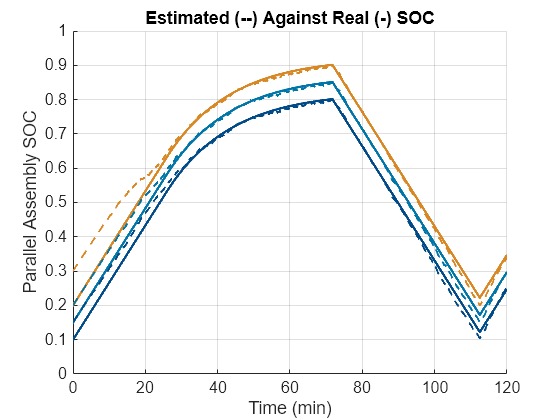带荷电状态估计器的充电和放电电池模组
自 R2024a 起
此示例说明了如何循环充电和放电电池模组,同时估计模组中三个并联组件随时间变化的荷电状态 (SOC)。此示例使用 SOC 估计值在充电和放电配置文件之间进行切换。为了进行估计,卡尔曼滤波器使用初始 SOC 估计值以及并联组件的电压、电流和温度。该模型根据每个并联组件的电芯平均温度来估计并联组件的温度。
为了进一步突出滤波器的稳定性,此例将滤波器输入与代表测量噪声的噪声信号相结合,并故意将初始 SOC 值设置为错误值。
模型概述
打开 stateEstimation 模型。
modelname = "stateEstimation";
open_system(modelname);
该模型包括一个预生成的 Module 模块、一个 Battery CC-CV 模块和一个 SOC Estimator 模块。Module 模块代表一个电池模组,包含三个并联组件,每个并联组件之间的间隙为 0.5 毫米,具有详细的模型分辨率和已启用的环境热路径。每个并联组件由四个单堆叠软包电芯组成。每个软包电芯的长度为 300 毫米,高度为 100 毫米,厚度为 10 毫米。有关如何生成 Module 模块的更多信息,请打开 controlledChargingCreatelib.mlx 文件。
运行仿真。
ssc_statEstim = sim(modelname);
仿真结果
该图显示了模组内并联组件的估计 SOC 值与实际 SOC 值之间的比较。
stateEstimationPlotSOC;

另请参阅
Module (Generated Block) | batteryModule | Battery CC-CV | SOC Estimator (Kalman Filter)